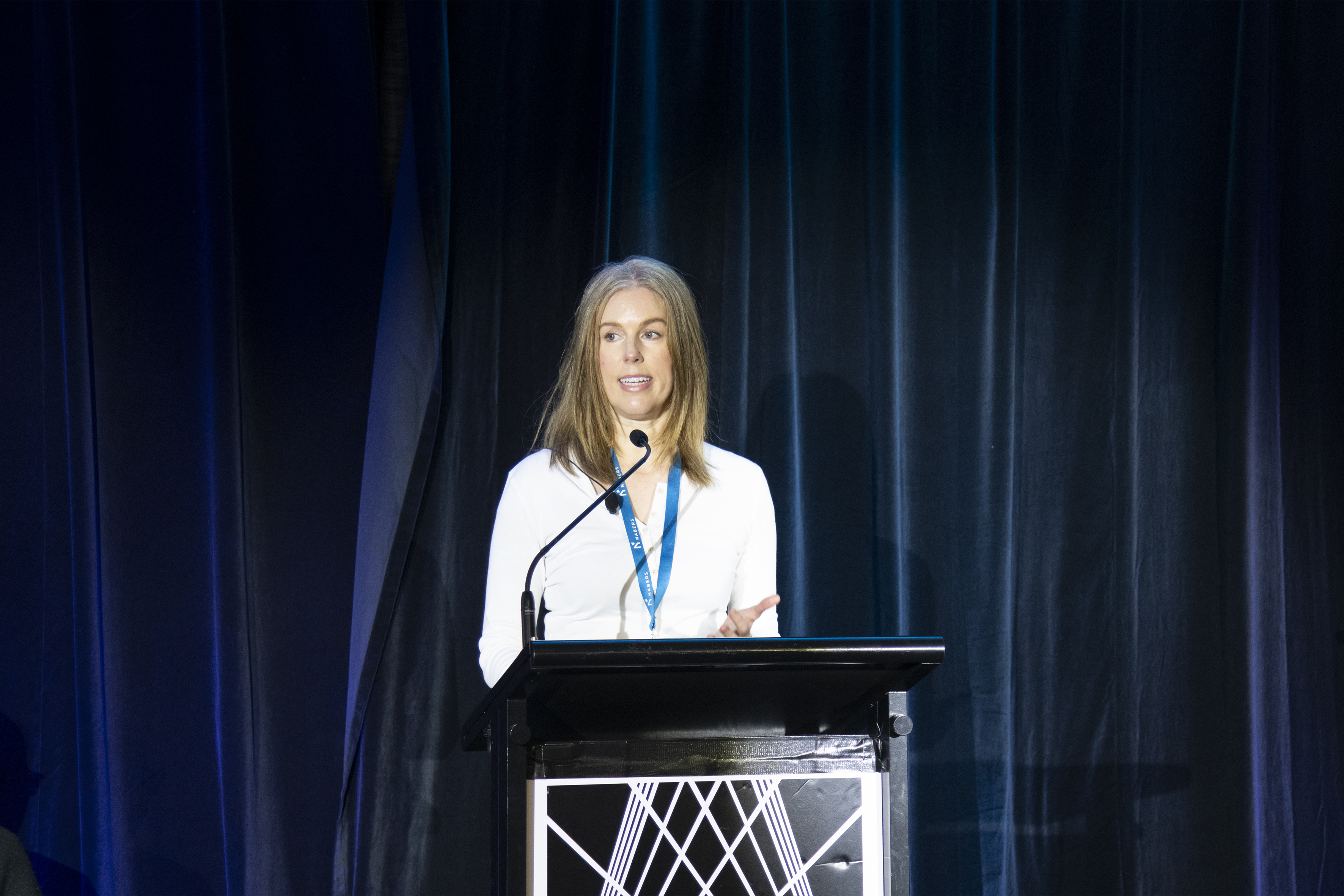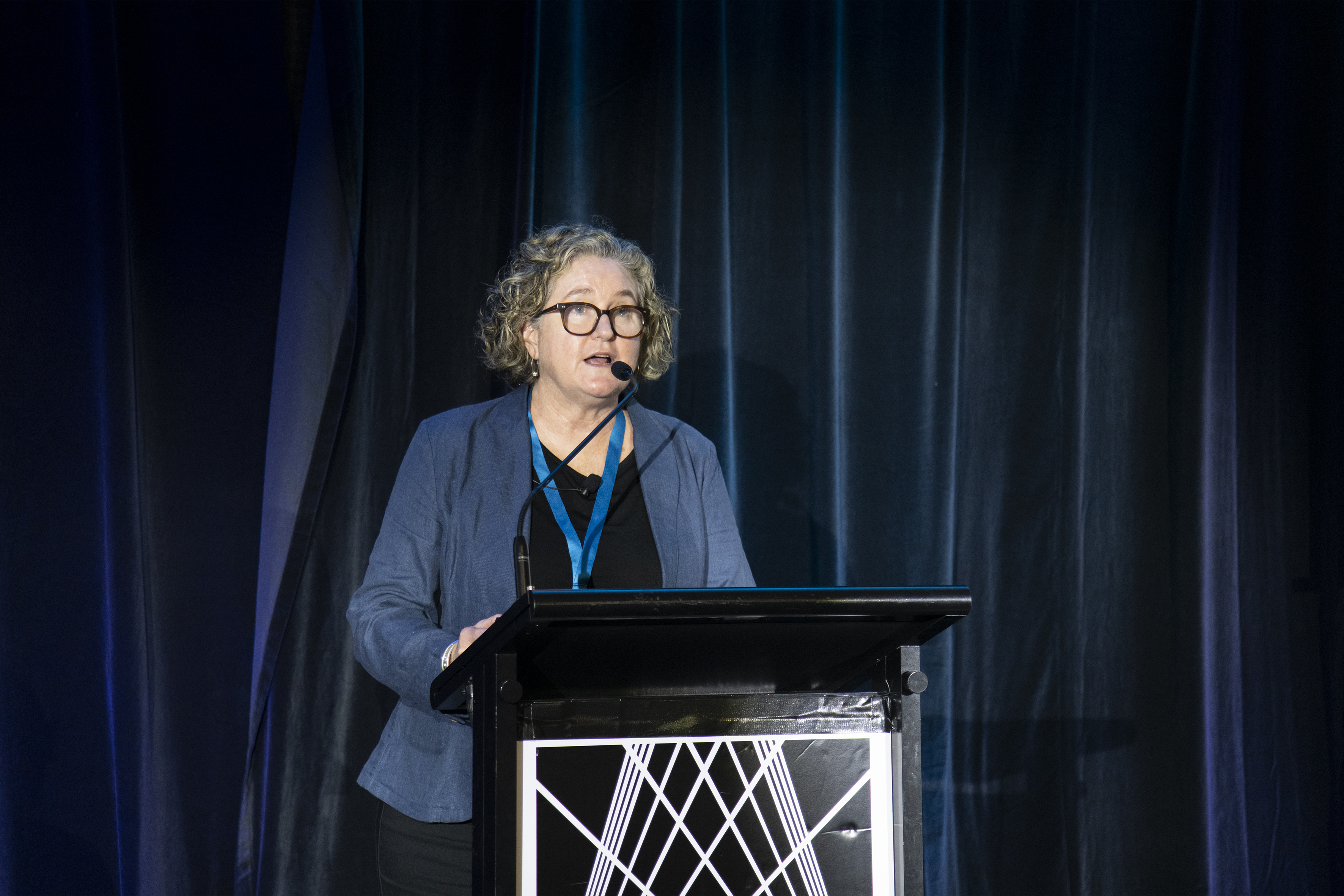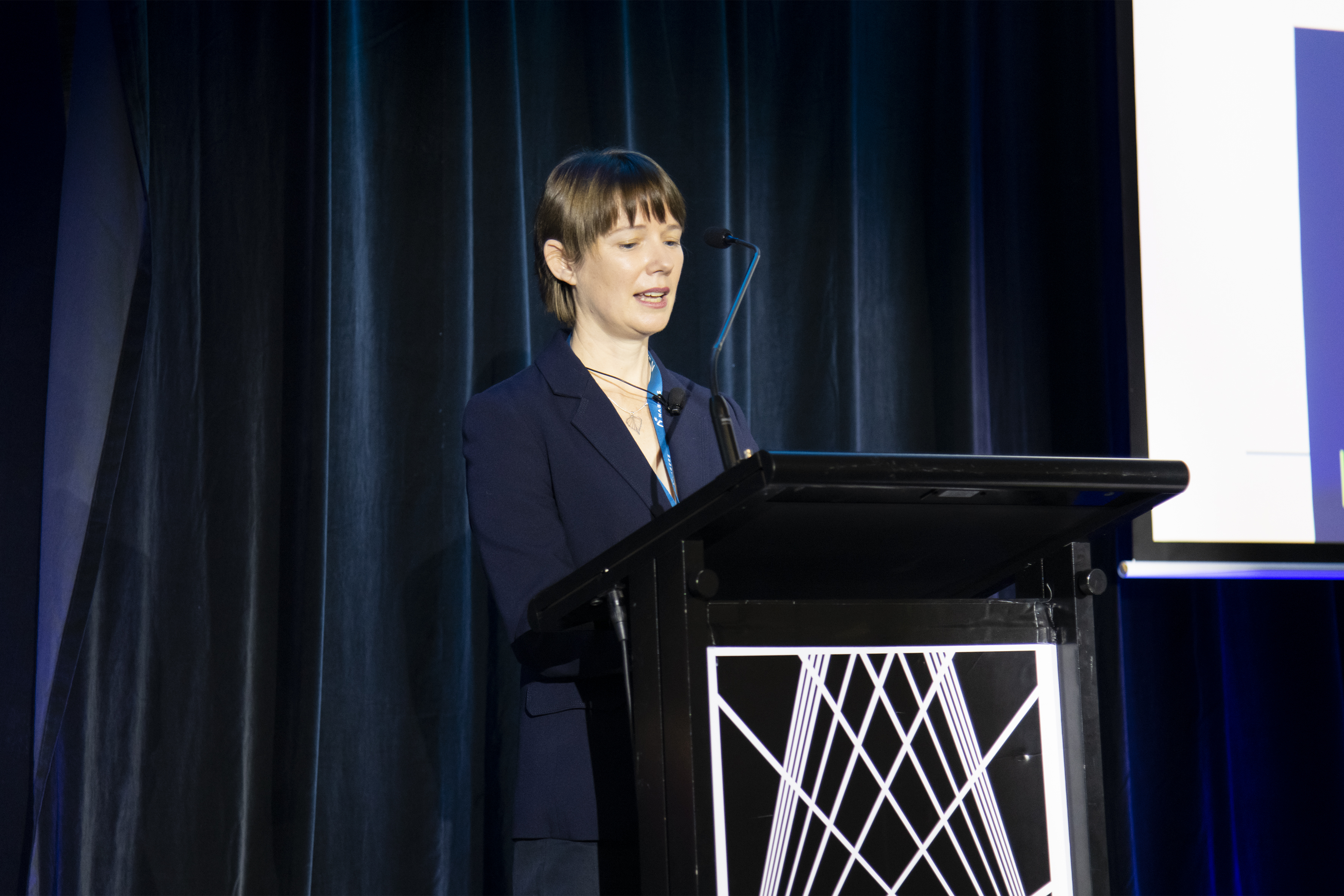This session at the 2024 NABERS + CBD Conference explored how programs at the local and state levels are helping building owners upgrade their assets and make the switch from fossil gas, while federal government leadership looks to expand mandatory disclosure, and drive demand for NABERS-rated office space. Find out how transformative policies are opening doors to a net zero future in Australia’s built environment.
Local: City of Sydney
The City of Sydney has set a target of net zero emissions by 2035. “Even with increases to GDP, population and employment, we have reduced our emissions by 41%” and are “on the way to net zero by 2035,” said Melinda Dewsnap, the City of Sydney’s Manager of Sustainability Programs.
By 2040, 50% of people in Greater Sydney, and 80% in the City of Sydney local government area, will live in apartments. The City of Sydney has invested $4.2 million into building upgrades through the Smart Green Apartments program. This has delivered $11.2 million in lifetime cost savings and avoided 61,488 tonnes of emissions.
“There are huge cost savings to be realised. We know an average 30% reduction in emissions and water consumption is possible regardless of a building's age.” This opportunity must be reflected in planning and regulation, with mandatory disclosure an important policy to drive change, Melinda said.

State: Victorian Government
Anne Martinelli, a Senior Policy Officer with the Victorian Department of Energy, Environment and Climate Action, is leading the delivery of Victoria’s Gas Substitution Roadmap. This Roadmap is putting efficiency and electrification at the forefront of efforts to wean Victoria off fossil gas.
Fossil gas contributes 17% of Victoria's emissions, which means reducing reliance on fossil gas is a key strategy to meet the Victorian Government’s net zero by 2045 target, Anne said. Around 50% of the state’s fossil gas consumption is in residential buildings, and another 10% in commercial buildings.
The Victorian Gas Substitution Roadmap was first released in July 2022, with several key commitments delivered. This included new incentives for electrification through the Victorian Energy Upgrades program and amendments to the Victorian planning provisions to eliminate “perverse incentives” that encouraged gas. From 1 January 2024, all new residential buildings requiring a planning permit are unable to connect to fossil gas, for instance. In December 2023 the Roadmap was released with new commitments, incentives and future regulation.
A new Large Energy User Electrification Support Program has been launched to help build business cases and support complex upgrades. “It is very difficult to regulate a one size fits all solution to such a complex and diverse space,” Anne noted.

Federal: Net Zero in Government Operations
“Electricity is the single largest source of emissions from the Australian Public Service,” said Luke Delancey, Director of Climate Action in Government Operations in the Australian Government’s Department of Finance.
The Net Zero in Government Operations Strategy was launched in November 2023, in line with the economy-wide legislated target of net zero by 2050 and a 43% reduction in emissions by 2030.
The strategy was “co-created” with all departments over 12 months, Luke said, and outlines how the Australian Public Service (APS) will reduce emissions from property, energy, procurement, fleet and travel. It captures capacity building and education opportunities to “improve the climate literacy” across the APS.
The policy includes new requirements for NABERS. For example, from 1 July 2025, new leases for office space of 1,000 square metres or more will only be signed when a minimum 5.5 star NABERS Energy can be met and maintained.
Luke applauded the “collective efforts” of private industry and the not-for-profit sector over many years, which allowed the Australian Government to achieve “a significant amount in the last 12 to 18 months”.

Federal: Commercial Building Disclosure program
The Australian Government opened consultation to expand the Commercial Building Disclosure program during the NABERS + CBD Conference.
Launched in 2011, the CBD program requires office buildings of more than 1,000 sqm to disclose a NABERS Energy rating at the time of sale or lease. The act of mandatory disclosure has driven a 35% reduction in energy use.
Mara Putnis, Director in the Commercial Buildings Policy section of the Australian Government Department of Climate Change, Energy, the Environment and Water, outlined proposed amendments to the CBD program.
The “relatively light touch” regulation “empowers people to make their own decisions by providing really high-quality information and data about the energy performance of buildings”. We know information drives change in office buildings, so how can we expand it?
The feasibility study for expansion, developed by KPMG, suggests mandatory disclosure could apply to most major commercial building types by 2035. The Australian Government is also seeking views on other types of disclosures.
“Perhaps hotels would be required to obtain a NABERS rating every three years and display that NABERS rating in online advertisements? Perhaps we use the NABERS Co-Assess tool, supported by new regulations, and require whole office building ratings? Perhaps the NABERS Renewable Energy Indicator is a mandated piece of information? It’s all up for discussion.”

Watch ‘Key policies unlocking the door to net zero in Australia’s buildings’ and other sessions from the 2024 NABERS + CBD Conference here

